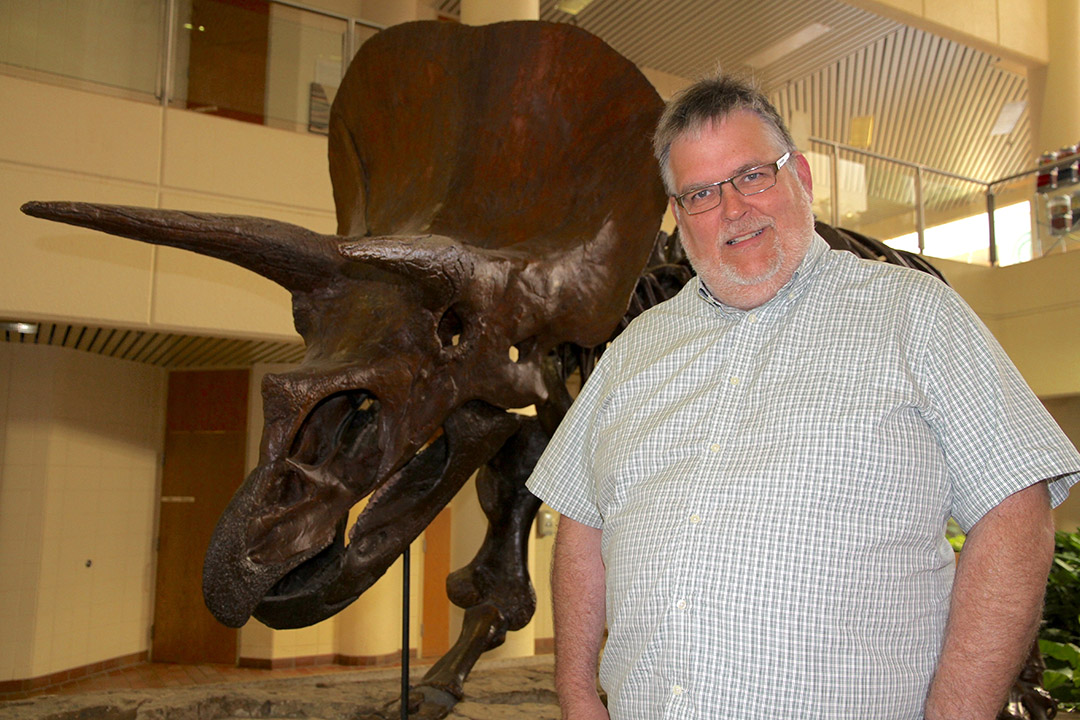
Canadian paleontologists coming to campus
From towering tyrannosaurs to tiny trilobites, the country’s top paleontologists have dug into hundreds of millions of years of history of life on Earth.
By James ShewagaThis fall, University of Saskatchewan researchers will be joined by other prominent paleontologists from across the country when the Department of Geological Studies hosts the prestigious Canadian Paleontology Conference for the first time in 21 years, from Sept. 21-24.
“We are excited that the conference is being held in Saskatoon this year and we look forward to hosting geoscientists from across Canada and around the world and showing them first-hand what Saskatoon and the University of Saskatchewan have to offer,” said Samuel Butler, department head of geological studies.
With a robust research staff on campus and some of the richest deposits and fossil finds in the country, conference chair Michael Cuggy said the university and the province are well-positioned to host this annual gathering.
“It’s good for the department because it brings a number of researchers and grad students to the province, some for the first time, and it gives them the opportunity to meet with our researchers who work here and learn what we are working on,” said Cuggy, a senior lab co-ordinator and sessional lecturer in geological studies. “It also increases the possibility of collaborative work in the future.”
The four-day conference will open with a reception in the Geology Building’s impressive Museum of Natural Sciences, featuring fossil finds and dinosaur displays of precise replica models of the likes of a Tyrannosaurus rex, a Triceratops and a Mosasaur, which can all be found at dig sites across the province. The conference will also feature a free public lecture on Sept. 22 by Royal Saskatchewan Museum researcher Ryan McKellar entitled, “Cretaceous amber: glimpses of terrestrial ecosystems during the Age of Dinosaurs.”
Participants will also travel to Wanuskewin Heritage Park, featuring archaeological dig sites dating back 6,000 years, and will tour the Canadian Light Source facility on campus, featuring the only synchrotron in the country.
“We are going to the CLS to learn about the paleontological applications of using the synchrotron,” said Cuggy. “These researchers might know that we have one, but because they don’t have a synchrotron at their own universities, they may not be familiar with what you can do with a synchrotron. So, they will be able to learn about how it can be used to help determine things like the colours of dinosaur feathers, and seeing structures that would otherwise be invisible. You can look at details of fossils that you couldn’t find any other way.”
Cuggy said the province has a long history of attracting paleontologists, who have flocked here for more than a century to find fossils, with the Mosasaur model on display in the Geology Building an exact replica of the 75-million-year-old Cretaceous creature found near the Gardiner Dam at Lake Diefenbaker back in the 1960s.
While Alberta’s Drumheller region garners most of the attention as a hub for fossil finds, Cuggy said the Cypress Hills area in southwestern Saskatchewan also has some of the richest deposits in North America.
“Probably the most significant finds in the province are in the Cypress Hills area, with fossil mammals from shortly after the extinction of the dinosaurs,” he said. “From about 50 million to 30 million years ago, we have the best collections of fossil mammals in the country, and they have been studied for well over a hundred years by people from all across the country. So, Saskatchewan is one of the best places in North America to look at early mammal evolution.”

